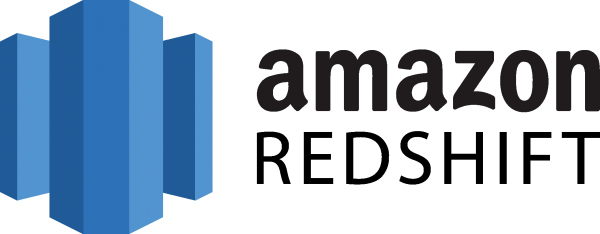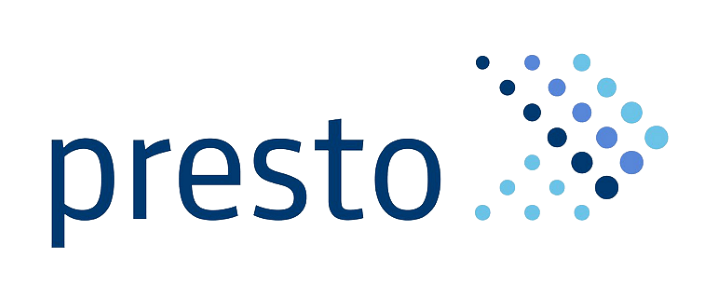Big data is an important part of operations for every technology-focused enterprise. But to make the analytics effective, there needs to be an efficient data management system governed by data engineers.
Data pipelines and architecture are complex environments, and building them requires special tools. These include software for collecting, storing, and validating data, as well as applications for data visualization, analytics, and many more. Read on to check out our choices for the top 20 data engineering technologies.
What are data engineering technologies used for?
Data engineering technologies are software tools used in data analytics. They help to collect, store, manage, move, analyze and visualize data. This software is helpful to data engineers, automating and streamlining a major part of their work, which includes building information infrastructure, designing data flows, integrating data from various sources into a common pool, validating and analyzing data, and much more. These tools make working with big data much easier.
Top data engineering tools
Data engineering processes require complex and reliable software. Below you can find a list of the tools most commonly used by data professionals in data engineering services, divided into four categories.
You’ll find software for data ingesting and storing, data transformation and management, data analytics, and visualization. These applications can work in cooperation with each other, providing a robust, efficient data architecture.
Data ingesting and storing tools
Amazon Redshift

Amazon Redshift is the most widely-used cloud data warehouse. It’s SQL software that performs structured and semi-structured data analytics. AWS fully manages it, so there are no maintenance tasks on the client’s side. This makes it a good choice for businesses of any size - from small and medium to government organizations and international enterprises.
Amazon Redshift is the data engineering tool of choice for many organizations, mainly because it is easy to use, scalable, and offers a good price performance. You can choose the provisioned or serverless option for predictable workloads or automated provisioning. According to AWS, Amazon Redshift provides up to 10 times better performance than other data warehousing tools. It also meets all compliance and security requirements, keeping all your data safe.
If you’re interested in the pricing of AWS products, check out our article about AWS cost optimization.
Big Query

Big Query is another fully managed data warehouse. It’s a Google product and a more cost-effective alternative to Amazon Redshift. It is a serverless, SQL-based data management tool for analyzing structured and semi-structured data. It’s easy to use and scale for any organization familiar with Google cloud services.
Big Query offers built-in machine learning possibilities, predictive modeling, and interactive data analysis. All of that is available with a user-friendly, spreadsheet-like interface, standard SQL, and flexible pricing models.
If you’re interested in Google Cloud Products, you can read about GCP cost optimization on our blog.
Snowflake

Snowflake is a fully managed cloud platform. Its high performance, elasticity, and storage and computing capabilities make it an exciting alternative to the more popular warehouses. Unlike AWS and Big Query, Snowflake allows you to store structured, semi-structured, and unstructured data.
Snowflake’s main benefit is a shared data architecture, which makes collaboration easier. Its features also allow for the development of data applications, models, and pipelines that can run independently, making the process more efficient.
Apache Hadoop

Apache Hadoop is an open-source software that allows for storing and processing large data sets. It delivers scalability and can be extended by many available Apache frameworks, some of which you can find in this article. Hadoop uses simple programming models and distributes tasks across clusters of computers utilizing their local computation and storage capacity.
Hadoop, unlike the above-mentioned software, is not a fully-managed product. It is a framework that makes data processing easier, utilizing the processing and storage capabilities of the cluster servers. It is more of a tool that can be used to build other services and applications, so it requires greater technical knowledge from the user.
Apache Kafka

Kafka is another Apache project. This one is used for creating high-performance data pipelines, data integration, analytics, and much more, utilizing a producer-consumer pattern. Kafka provides scalability of storage and processing, as well as permanent storage. It allows for website activity tracking, messaging, operational monitoring data, log aggregation, and more.
Kafka can track huge data streams in real time. Its main use is ingesting that data into data warehouses and lakes, such as Azure and Redshift. It can also be used to process and analyze data using a library called Kafka Streams.
Segment

Segment is a tool for collecting data from mobile and web apps. It collects, transforms, and archives the data, also allowing for connecting it to different tools. It provides real-time information about customers, which is a source of valuable insight.
Segment can be used to build data-driven products that answer real consumer needs or by marketing teams to create highly personalized campaigns. It is also helpful in engineering, making data standardization and integration of new tools easier.
Data transformation and management software
Airflow

Airflow is another Apache project. It is an open-source workflow management platform that was initially created by Airbnb. Airflow is scalable and extensible and allows for dynamic pipeline generation. It is also easily extensible and scalable due to its modular architecture.
Airflow is a pure Python framework, which makes it easy to create personalized workflows. It is also integrable with AWS, Google, and other third-party products. Its significant benefit is a modern, user-friendly interface.
Anyone with Python knowledge can create a personalized workflow, including machine learning models, data transfer pipelines, infrastructure management automation, and much more.
Stitch

Stitch is another open-source tool. This one is useful for rapidly moving data from its source into the warehouse. It is easily extensible and provides a transparent and controllable data pipeline. Stitch operates in the ETL (extract, transform, load) model.
A significant benefit of this tool is that it can be used without writing code. This makes it a great collaboration tool for teams that need cooperation between technical and non-technical workers.
Redash

Redash is an excellent data management tool for those who may lack technical knowledge. It provides an easy-to-use SQL editor and allows users to connect and query data sources. It also provides some basic visualization tools. It is open-source software that can be easily adjusted by adding more features.
Redash offers an SQL editor, dashboard creator, queries in natural syntax, and easy collaboration. It’s a good tool for effectively sharing data.
Fivetran

Fivetran provides data pipeline automation, connectors, and data transformation. This comprehensive tool lets you collect data from all customer-related sources and centralize the data at the destination of your choice. This means that it can be easily transferred to data warehouses, such as AWS products, Google Cloud, or Snowflake.
Fivetran is another tool that doesn’t require coding knowledge, so marketing or sales teams can successfully use it to collect customer data. Fivetran can also be used to collect data from an app.
Prefect

Prefect is a data pipeline tool. It ensures that pipelines work as expected and allows for dataflow automation. Prefect takes care of scheduling, infrastructure, error-handling logs, caching, and much more. Complementary products are available that make working with Prefect even easier; for example, Prefect Cloud, an orchestration platform, and Prefect Core, a data workflow tool.
The basic version of Prefect is open source and offers free plans with a limited number of users. They also have special offers for non-profits, startups, and higher education institutions.
Data analytics tools
Apache Spark

Apache Spark is one of the most commonly-used tools for data processing. It’s a framework that works well for performing tasks on large data sets at high velocity. Apache Spark can be used independently or in cooperation with different tools. Its significant benefit is that it distributes data processing across multiple computers, which allows for using greater computing power.
The key features of Apache Spark are data streaming, SQL analytics, exploratory data analysis, and machine learning. This tool can be used with different languages, such as Python, SQL, Scala, Java, and R. Spark is also easily integrable with many other frameworks.
Apache Hive

Hive is another Apache project that is useful in data engineering. This one provides data queries and analysis in a data warehouse environment. It is meant to be used with Apache Hadoop.
Hive provides an interface similar to SQL which lets you query data from various databases integrated with Hadoop. It uses an exclusive language called HiveQL. The most important features of Hive are data summarization, analysis, and querying.
Dbt

Dbt is an SQL-based command-line tool. It’s a transformation workflow that allows for easy collaboration and analytics. Anyone who knows SQL can use Dbt to create data pipelines. It is a user-friendly and commonly-used tool.
Dbt can be used for transforming data but doesn’t provide extraction or load operations. However, it works well for data modeling, testing, and documentation. It supports many data platforms, such as Redshift, Big Query, Apache Spark, and Snowflake.
Presto

Presto is a query engine. It is open-source SQL software. Presto queries data where it is stored, so there’s no need to move it into a separate analytics tool. Its in-memory analytics engine means it works relatively fast, providing almost real-time results.
Presto is compatible with relational and NoSQL databases, data warehouses, and data lakes. Presto can combine data from various sources, such as Kafka, Hadoop, Redshift, and many other tools.
Sisense for Cloud Data Teams (used to be Periscope)

Sisense is used for business intelligence and data analytics. It allows users to integrate data from different sources for analysis, and visualization. This tool has a cloud-native architecture, which makes it compatible with other big data environments.
Sisense for Cloud Data Teams provides all the tools necessary to share data insights with a team. Similarly to Redash, it can be easily expanded by SQL users.
Data engineering software for visualization
Tableau

Tableau is a widely used business intelligence tool for data visualization. It’s also one of the oldest. It uses a drag-and-drop interface that allows for creating dashboards. Tableau’s main functionality is gathering and extracting data to create useful, understandable visualizations that provide business forecasts and support decision-making.
Looker

Looker is another business intelligence software for visualizing data. It’s a bit more advanced, as it has the LookerML language that allows for describing data relationships in an SQL database. This feature makes Looker adjustable by engineers so that it is easier to use by non-technical members of the organization.
Power BI

Power BI is a data visualization tool from Microsoft. It’s focused on business analytics and provides interactive visualizations and business intelligence features. It can be used by users with little to no technical knowledge to create reports and dashboards. Power BI is great for data storytelling because it creates engaging charts and visualizations.
Mode

Mode is a tool for visualizing large data sets. It is a web-based platform focused on exploring data through digestible reports, dashboards, and other visualizations. Its interface is user-friendly, even for non-technical users. Mode also has some analytics possibilities using Mode SQL.
What is the best language for data engineering?
There is no right answer to the question of which language is the best for data engineering, but Python is the most popular. It is a general-use language, so it’s used in various projects, but it is easily adjustable thanks to the extensive amounts of plugins, frameworks, and libraries that make this language a perfect fit for data engineering.
One of the Python extensions used for data engineering is the great_expectations framework. It makes it easier to monitor, validate, and understand data. This framework helps engineers to improve and maintain the quality of data automatically.
Conclusion
Data engineering is a field that gathers more and more attention each year. That means that there are increasing numbers of resources and tools available to streamline the process of data analytics. It’s important to find the one that suits you best and is understood by your team. You can always mix and match to find a solution that will meet your project and team's requirements. Using these tools helps you get one step ahead and make better informed, data-driven decisions.








